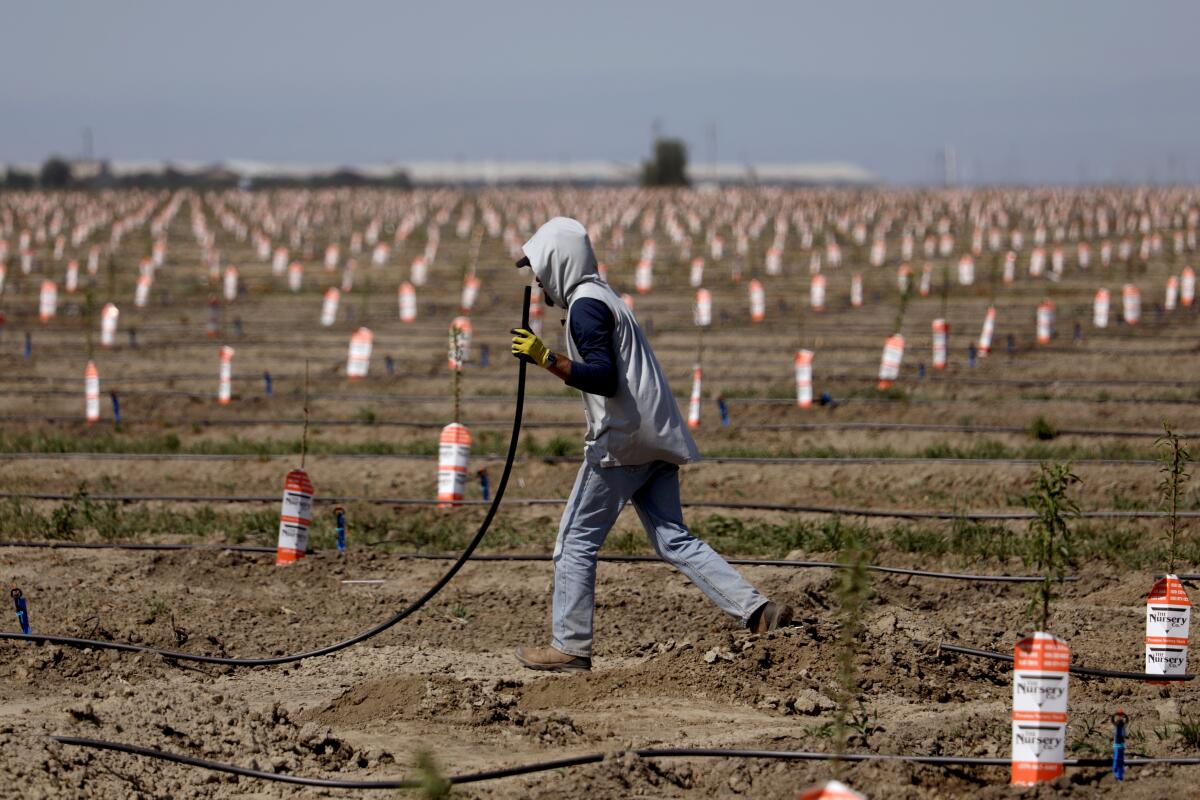Letters to the Editor: California drained Tulare Lake for farming. Let’s use the drought to restore it

- Share via
To the editor: Tulare Lake, as the article on the drought in the San Joaquin Valley notes, was once the largest body of fresh water west of the Mississippi River. It was a vast wetland of tules and willow trees that supported the indigenous Yokut tribe for many thousands of years. It was the most important stopover for birds on the Pacific Flyway on the West Coast.
When it was drained, it did not “transform desert scrub” into croplands; rather, it transformed incredibly diverse marshes and productive ecosystems into a monoculture.
Denise England of the Tulare County Water Commission says that if things continue as they do with the drought, there will be a lot of open space available. She hopes to see the current farming and ranching economy replaced with something else, “perhaps factories or business parks.”
Here’s a novel idea: Let’s restore what was once Tulare Lake and its rich wetlands so that we may welcome the birds and other wildlife back.
Tony Baker, Rancho Palos Verdes
..
To the editor: I was born in Los Angeles in the 1950s, and I have lived through more droughts than I can remember.
Does anyone else notice the disconnect between these repeating droughts and the constant drumbeat by politicians and developers for more housing? And, when one drives north from Los Angeles to the San Francisco Bay Area, one can’t help but notice how much land is devoted to growing water-intensive almonds.
Sometimes I wonder if our politicians live in a different state. Another drought — what a shock.
Karla Klarin, Santa Monica
..
To the editor: “As drought revisits San Joaquin Valley, some wonder if farming can survive,” the articles says. Well, it can’t. It was never meant to exist — at least not to the extent it does.
California is largely arid and semi-arid with periods of rain. Water is diverted from the Colorado River. Aquifers are depleted. Land is literally sinking as agribusiness digs bigger and deeper wells.
The once-arid drive up the 5 Freeway through the San Joaquin Valley is covered with almond trees, which require about one gallon of water per nut.
Almonds are California’s most valuable crop, worth about $6 billion, and about 70% of it is exported. Farmers aren’t growing food; they’re growing snacks for Europe, China and India. California needs its water for people, not snacks.
M.C. Allen, West Covina
More to Read
A cure for the common opinion
Get thought-provoking perspectives with our weekly newsletter.
You may occasionally receive promotional content from the Los Angeles Times.









